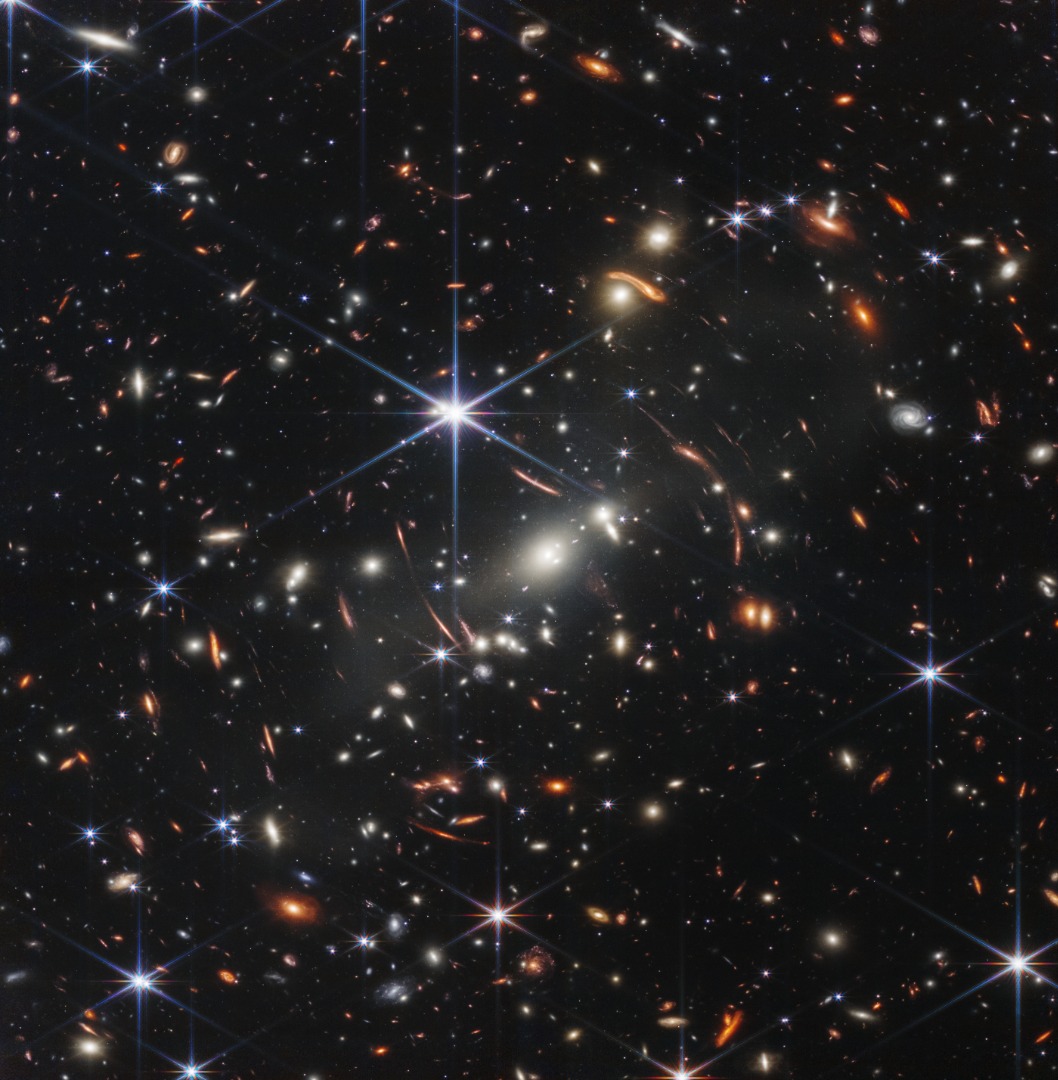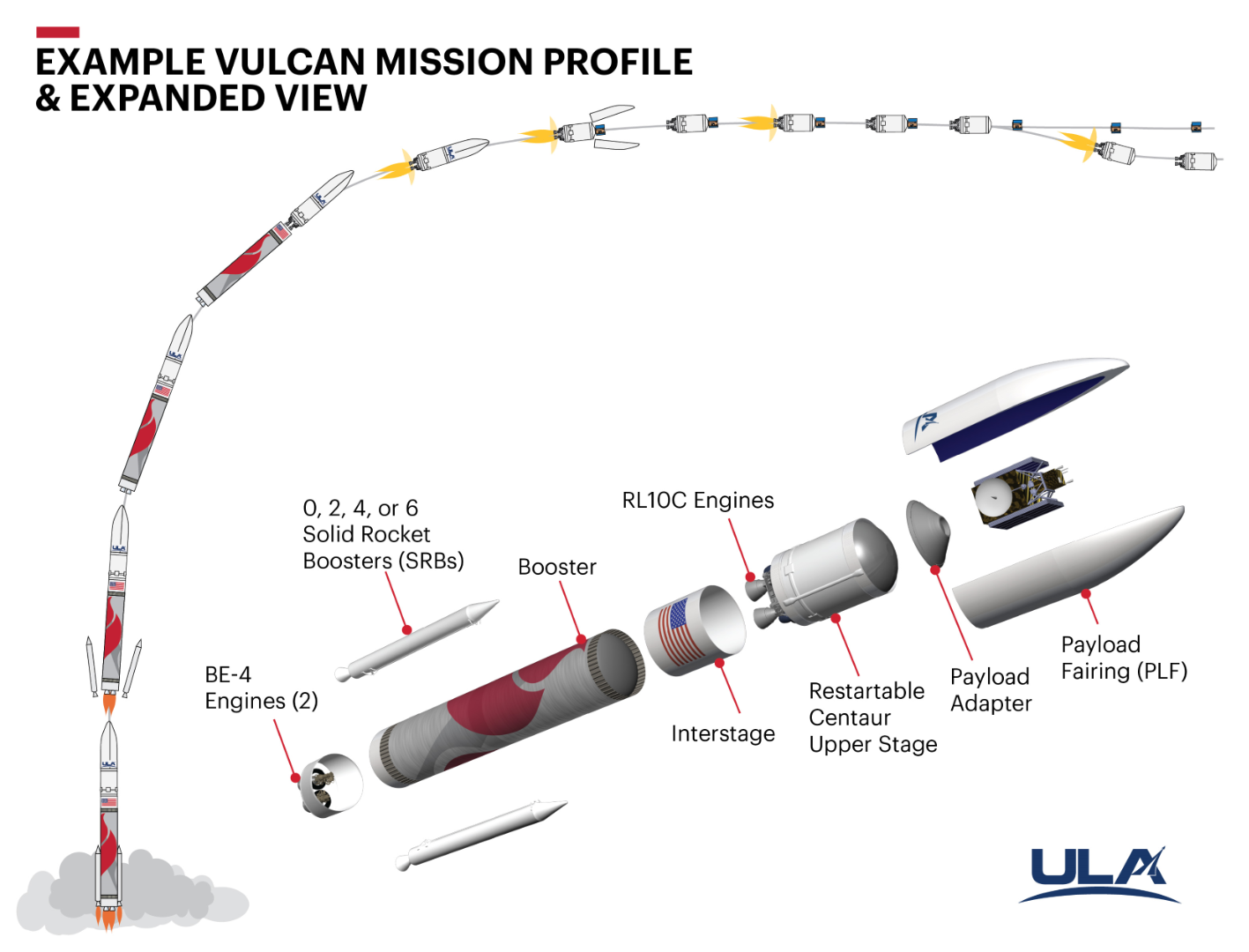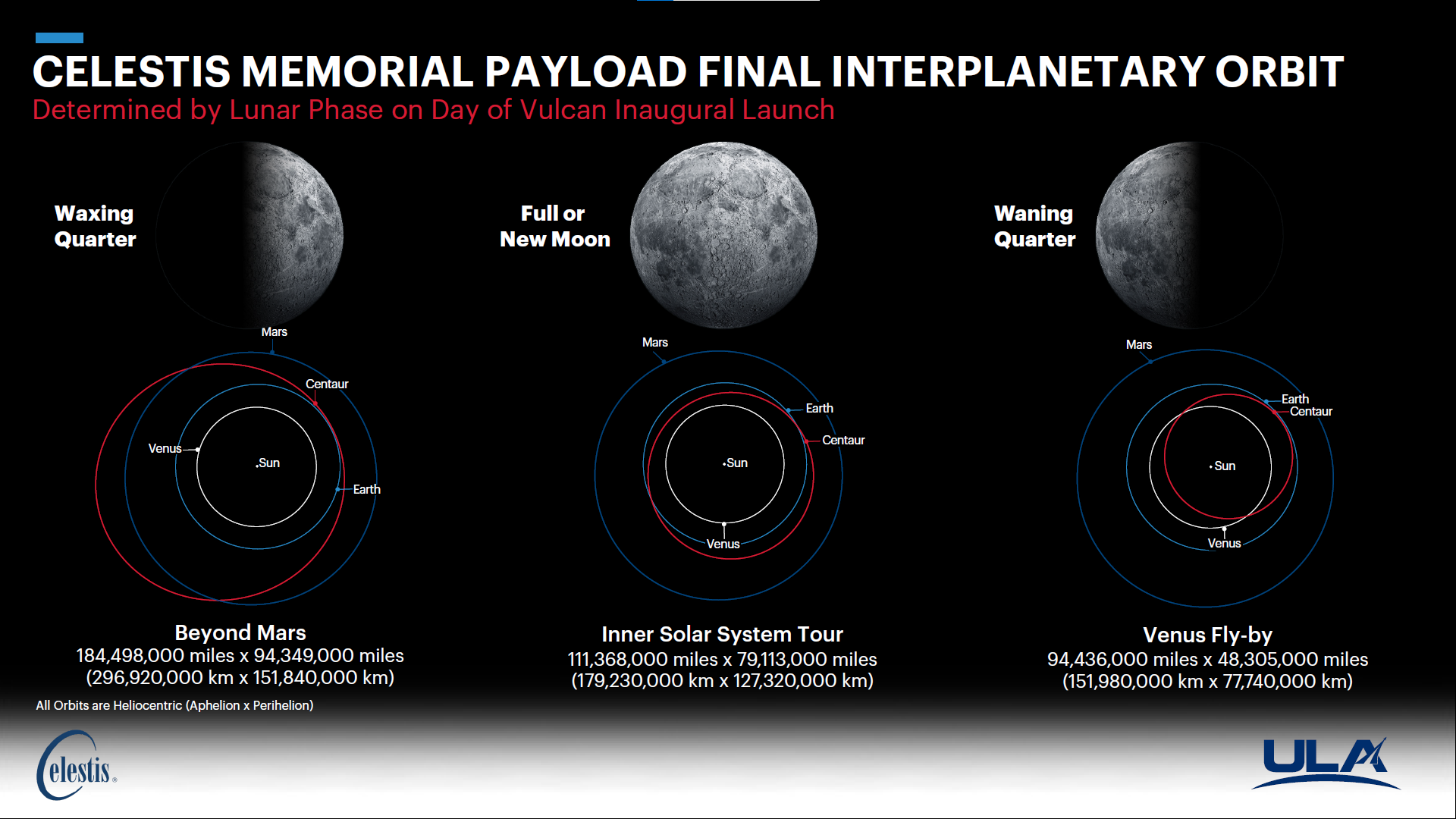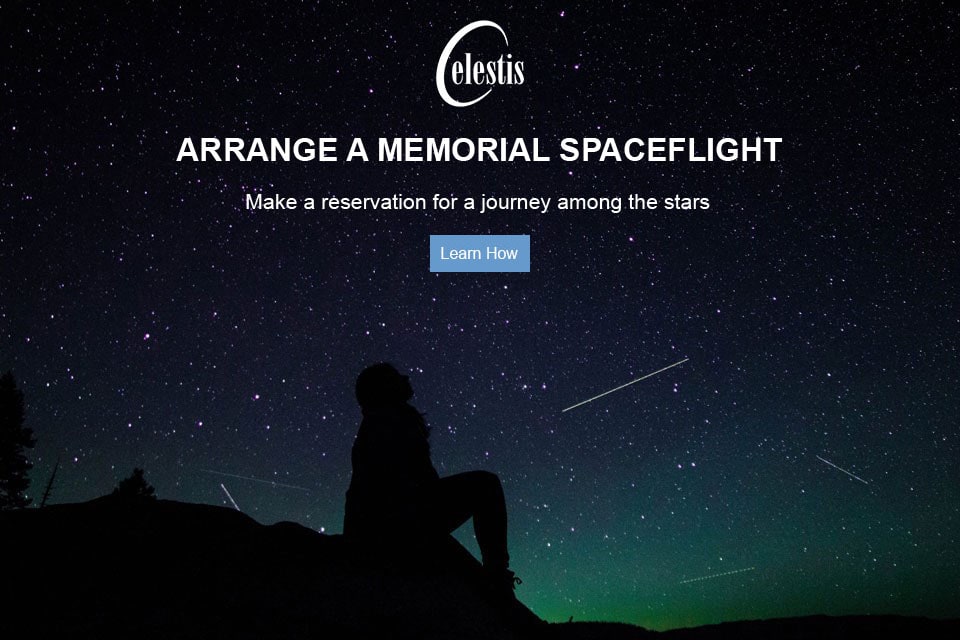Enterprise Flight to Enterprise Station: Humanity’s First Outpost in Deep Space

The James Webb Space Telescope reveals a tantalizing view of deep space. Image Credit: NASA/ESA/CSA/STScI
United Launch Alliance’s (ULA) brand new Vulcan Centaur launch vehicle will loft not one but two Celestis missions beyond low Earth orbit. One mission is the Tranquility Flight, which will be attached to Astrobotic’s Peregrine Lunar Lander, the world’s first commercial lunar lander. The second mission will fulfill, at long last, Celestis’ deep space mission profile. The Enterprise Flight will establish Enterprise Station, a historic first outpost representing humanity in deep space. But how do the Vulcan booster and Centaur upper stage work, and where will Enterprise Station take residence?
ULA’s Vulcan Centaur Launch Vehicle
The Tranquility and Enterprise Flights not only fulfill Celestis’ slate of beyond low Earth orbit missions but also mark the maiden flight of ULA’s Vulcan Centaur rocket. ULA is the United States’ most experienced launch provider and has an incredible launch success rate. According to its website, “With more than a century of combined heritage, United Launch Alliance is the nation’s most experienced and reliable launch service provider. ULA has successfully delivered 150 missions to orbit that provide critical capabilities for troops in the field, aid meteorologists in tracking severe weather, enable personal device-based GPS navigation, and unlock the mysteries of our solar system. Since ULA was formed, our rockets have placed more than $70 billion of satellite assets into orbit.”
The Vulcan Centaur launch vehicle can also be adapted for a variety of mission profiles. ULA’s website states, “Vulcan Centaur is available in four standard offering configurations including zero, two, four, and six Solid Rocket Booster (SRB) variants.” The Tranquility and Enterprise Flights will fly on Vulcan Centaur’s two-SRB, standard payload fairing variant. The “fairing” encloses the payload at the very top of the rocket, protecting it from the harsh environment experienced while passing through the Earth’s atmosphere during the boost phase of launch.
When Celestis’ Vulcan Centaur lifts off from Cape Canaveral Space Launch Complex 41 later this year, the launch will begin with the ignition of Vulcan’s two BE-4 engines, manufactured by Blue Origin and each providing 550,000 pounds of thrust, and two Northrop Grumman Graphite Epoxy Motor (GEM) 63XL SRBs. The SRBs will fire for 90 seconds, each adding approximately 460,000 pounds of thrust to the launch vehicle. With the additional boost provided by the SRBs, Vulcan will appear to “leap” off the launch pad! After the SRBs are jettisoned, the BE-4 engines will continue to power Vulcan’s ascent. Approximately five minutes into flight, the BE-4 engines will be shut-down, and the Vulcan booster will separate from the Centaur upper stage, followed shortly by ignition of the Centaur upper stage and jettison of the payload fairing.
After separation of the payload fairing, the Centaur upper stage with its two RL10C engines, built by Aerojet Rocketdyne, will carry the payloads to their mission orbits. Centaur is the world’s most advanced upper stage, with a heritage stretching back to the 1950s when rocket scientists brainstormed ways to utilize liquid hydrogen stages to propel payloads deeper into space. The high-energy Centaur upper stage is powered by liquid oxygen and liquid hydrogen and can perform multiple engine restarts in space to fulfill its mission milestones.

Image Credit: United Launch Alliance
Establishing Enterprise Station
Following its launch, the Centaur stage will leave Earth’s field of gravity en route to Peregrine’s Trans-Lunar Insertion (TLI) orbit. Once Astrobotic’s Peregrine Lunar Lander has separated from the Centaur upper stage, it will continue its journey to the Moon (and fulfill the Tranquility Flight). Shortly after Peregrine’s separation, the Centaur upper stage carrying the Enterprise Flight crew will be restarted, beginning its journey beyond the Earth-Moon system into the Solar System.

Image Credit: United Launch Alliance
Once its stable solar orbit has been established, the Enterprise Flight will be renamed Enterprise Station and will be the first imprint of humanity – with its DNA, data, and memorial flights – to go beyond the Earth-Moon system, becoming part of the deeper cosmos. Moreover, it will serve as a beacon to “others” – a representation of Earth, its customs, and its culture to possible other lifeforms that may exist in our galaxy.
An Unprecedented Mission of Firsts
Here’s a look at Celestis’ upcoming Tranquility and Enterprise Flights by the numbers:
- The first flight of the Vulcan launch vehicle;
- The first commercial lunar lander (Astrobotic Peregrine);
- The first U.S. lunar landing since 1972’s Apollo 17; and
- The first-ever outpost of humanity in deep space.
For more information, please visit our Enterprise Flight web page.



